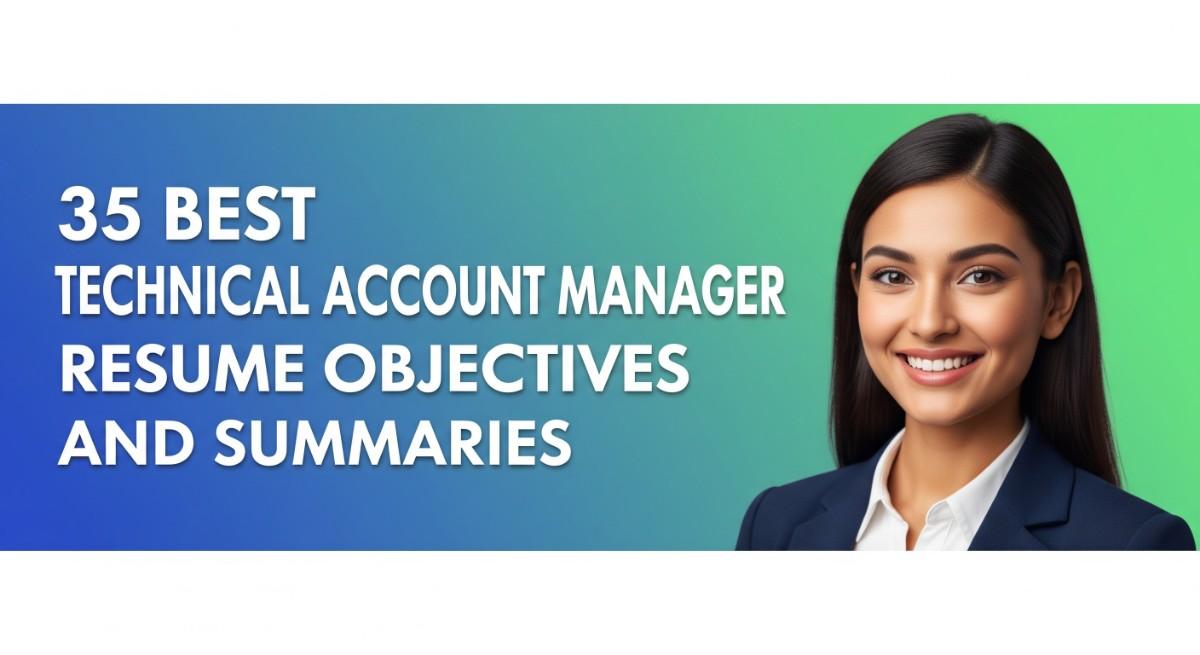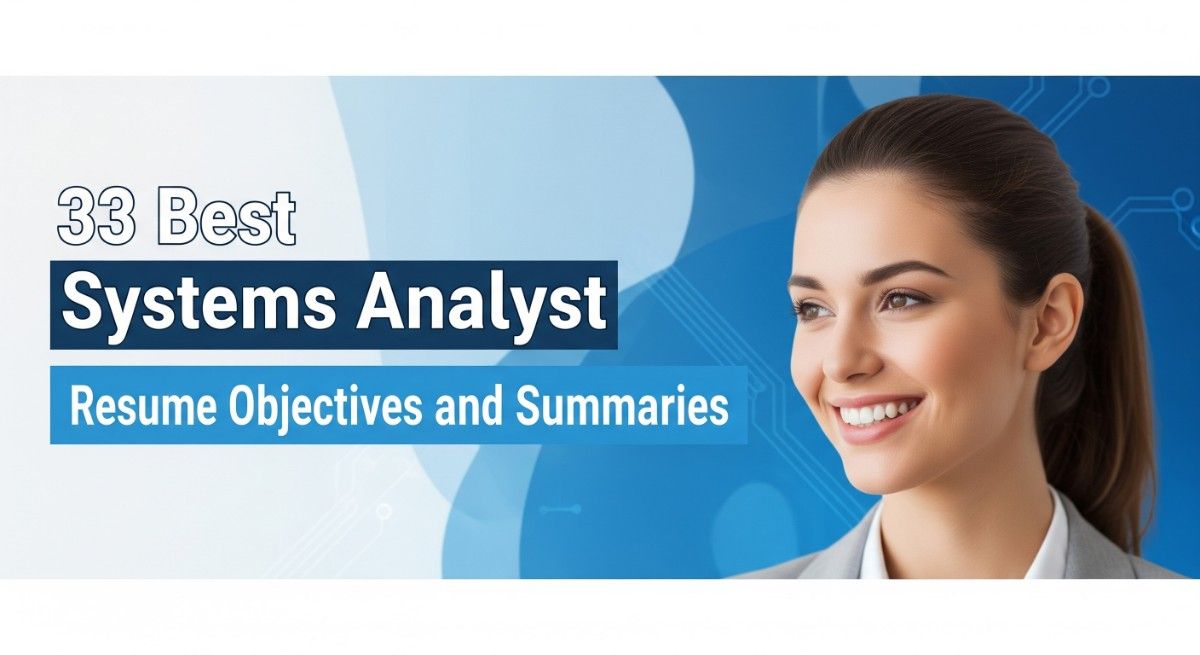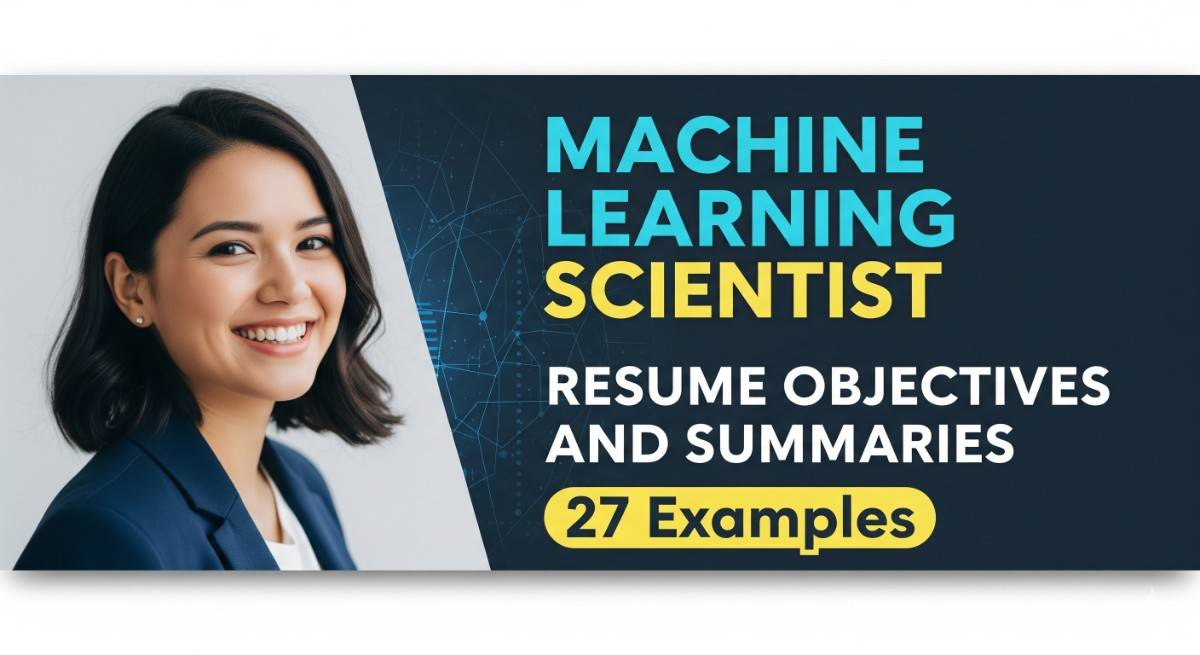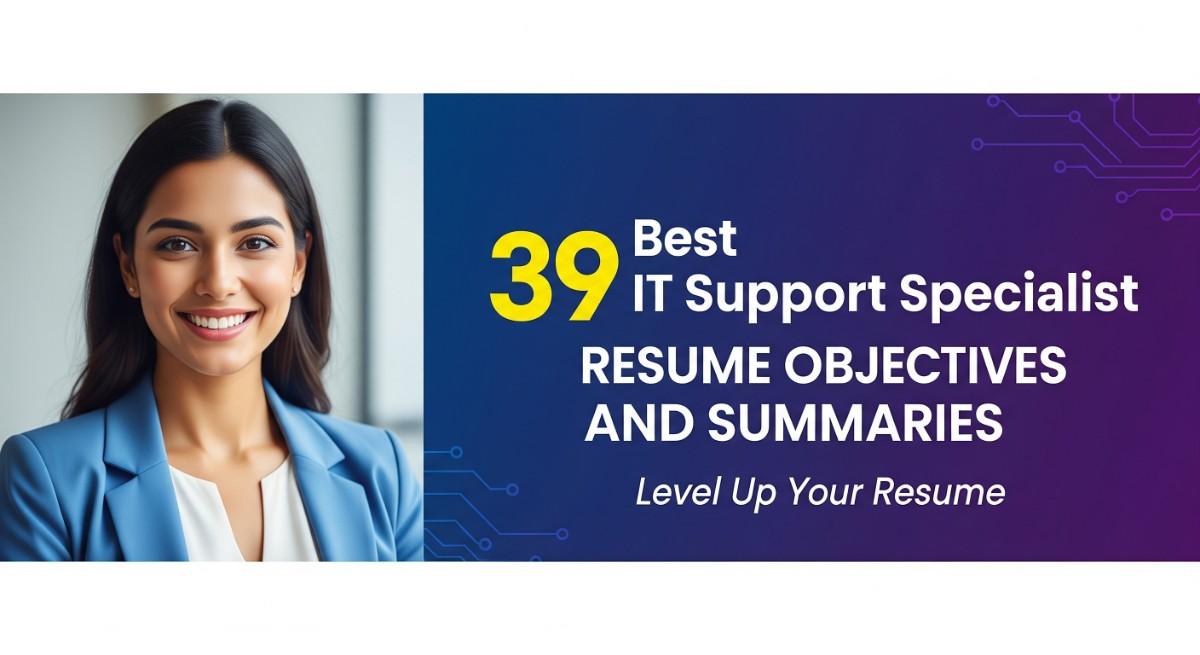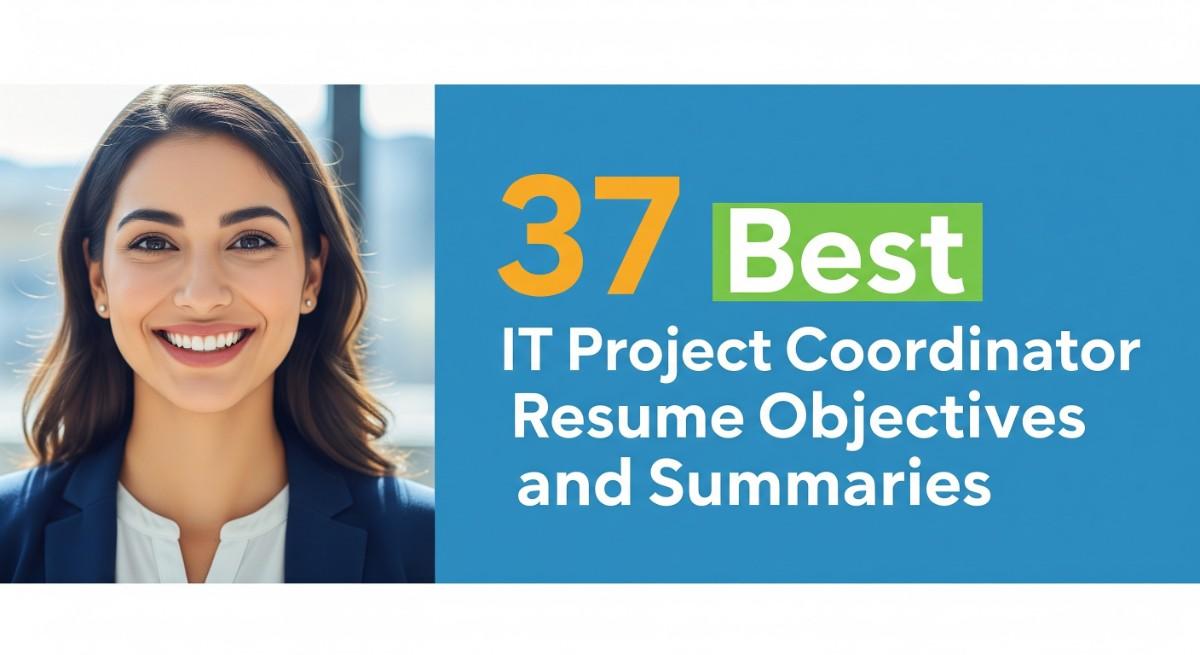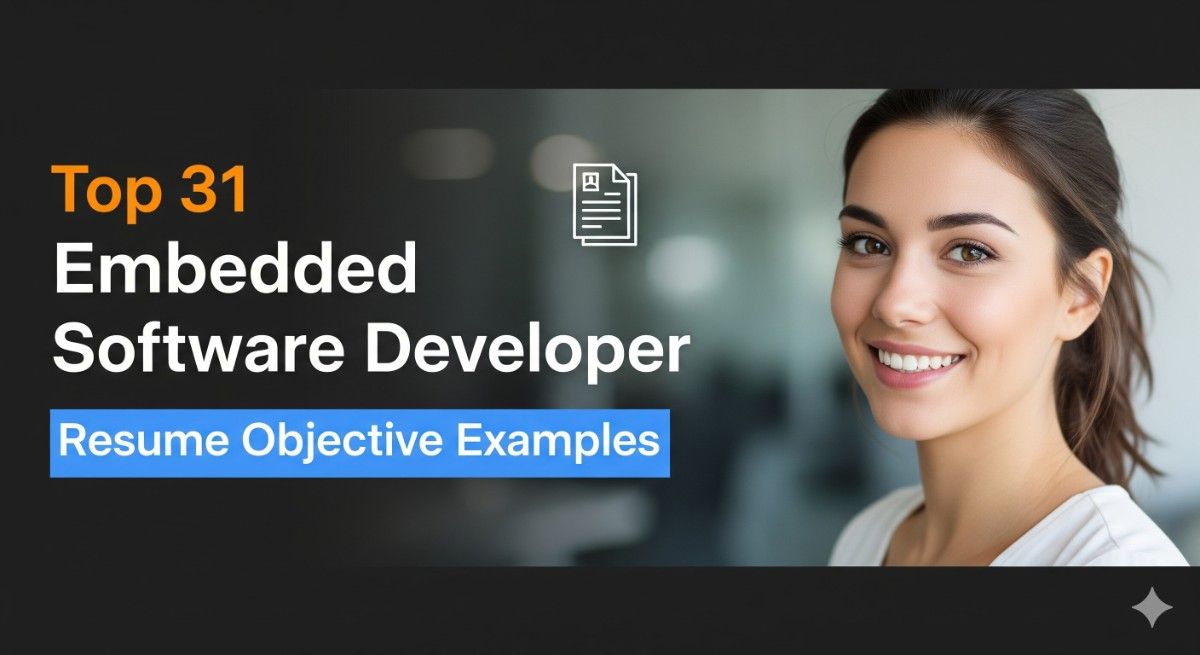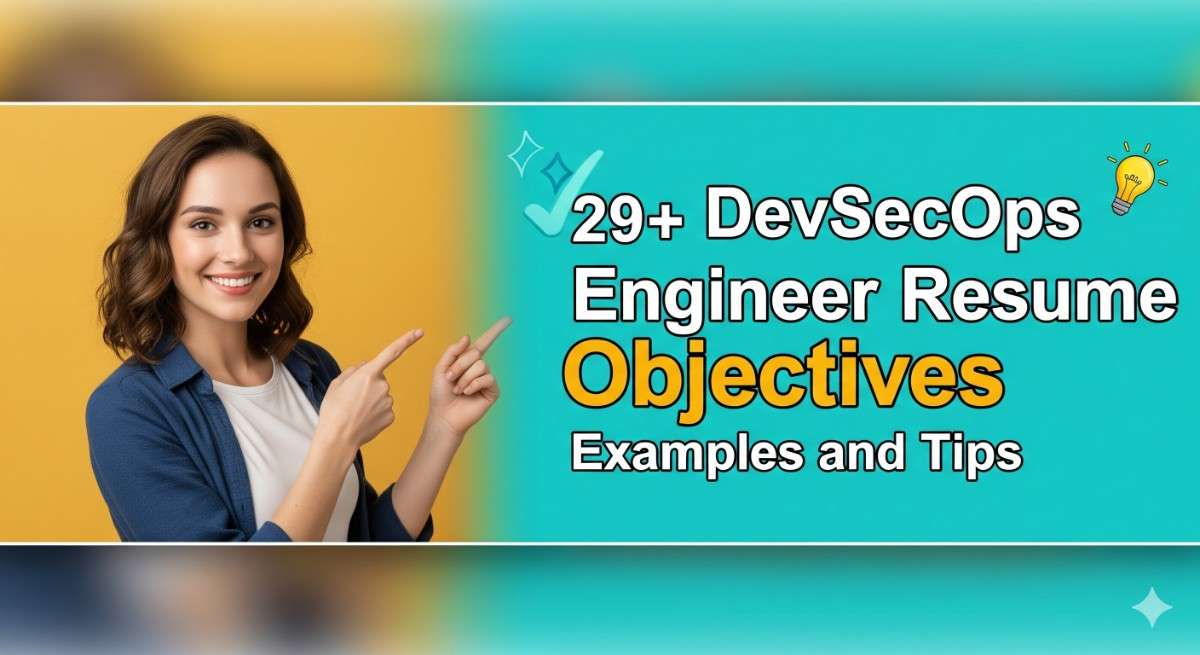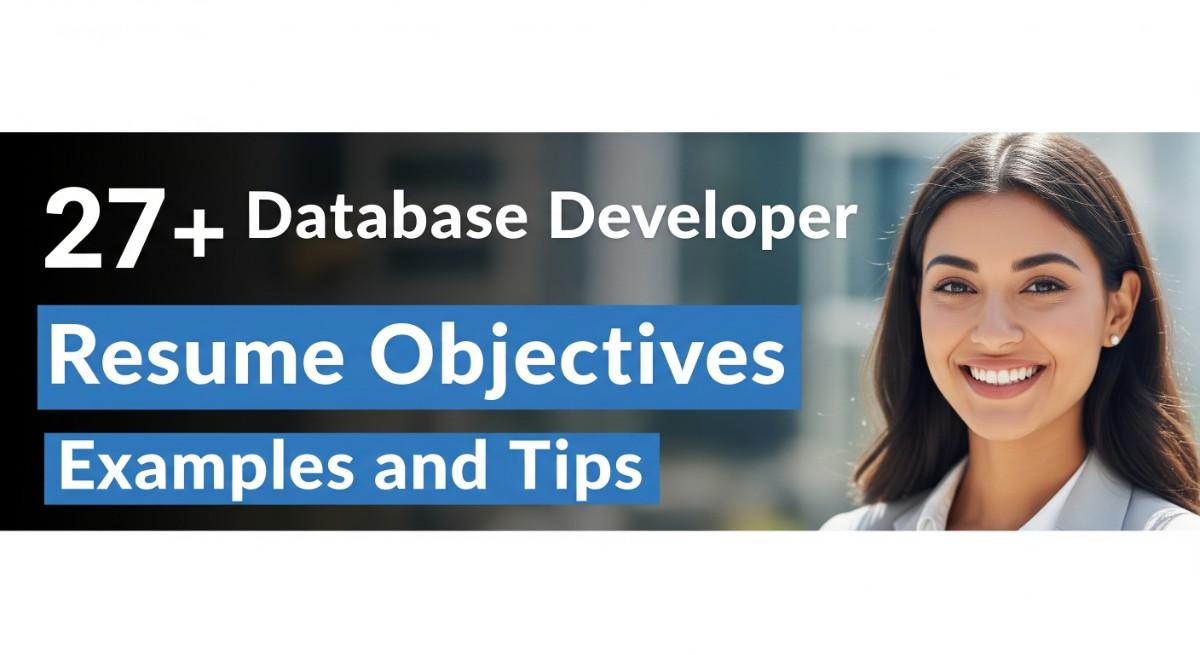
37 Best Web Architect Resume Objectives and Summaries for 2025
In the competitive landscape of Web Architect roles, a compelling resume objective or summary serves as a critical first impression that can significantly influence hiring managers. These opening statements encapsulate a candidate’s professional identity, showcasing their technical expertise, design acumen, and innovative problem-solving skills. By clearly articulating career goals and highlighting relevant achievements, candidates can convey their unique value and enthusiasm for the role, making them memorable in a sea of applicants. A well-crafted objective or summary not only sets the tone for the resume but also demonstrates a candidate’s ability to understand and address the specific needs of a potential employer, ultimately enhancing their chances of landing an interview.
- Web Architect Resume Objectives
- Web Architect Resume Summaries
- How to Write Compelling Web Architect Resume Objectives and Summaries
- Key Takeaways for Web Architect Resume Objectives and Summaries
- Frequently Asked Questions
- What should be the ideal length for a Web Architect resume objective or summary?
- How can I customize my Web Architect resume objective or summary for different job applications?
- What type of keywords should I include in my Web Architect resume objective or summary?
- How can I measure the effectiveness of my Web Architect resume objective or summary?
Explore professional resume examples to understand what makes an effective opening statement.
Web Architect Resume Objectives
Choose from these Web Architect resume objectives and customize them for your specific situation:
Enthusiastic recent graduate with a degree in Computer Science and a passion for web development seeks an entry-level Web Architect position. Eager to leverage skills in HTML, CSS, and JavaScript, along with a solid foundation in responsive design, to create user-friendly web applications that enhance user experience and engagement.
Detail-oriented Web Architect with over 3 years of experience in designing scalable web applications. Proficient in utilizing frameworks such as Angular and React, I am committed to delivering high-quality, maintainable code while collaborating with cross-functional teams to ensure seamless integration and performance optimization.
Creative Web Architect with a proven track record of leading successful web projects from concept to implementation. With 5 years of experience in both front-end and back-end technologies, I aim to innovate user journeys and drive business objectives by applying cutting-edge solutions and enhancing web security protocols.
Results-driven Web Architect with 8 years of experience in developing robust web infrastructures. Known for implementing Agile methodologies and optimizing performance, I aim to contribute my expertise in cloud technologies and microservices architecture to create efficient, scalable systems that align with organizational goals.
Proactive Web Architect looking to transition from a software engineering role into a dedicated web architecture position. Bringing 4 years of experience in backend development and a keen understanding of user experience design, I am eager to apply my analytical skills and creativity to build comprehensive web solutions.
Accomplished Web Architect with over 10 years in the industry, specializing in enterprise-level web applications. My background in DevOps practices has enabled me to improve deployment efficiency by 30%, and I seek to bring my deep knowledge of RESTful APIs and serverless architecture to a forward-thinking organization.
Dedicated Web Architect returning to the workforce after a career break, with a strong foundation in web technologies and a new focus on modern frameworks. Eager to leverage my past experience and recent certifications in cloud computing to deliver innovative web solutions that meet user needs and drive business success.
Forward-thinking Web Architect with 6 years of experience in mobile-first design and progressive web apps. I am passionate about employing user-centered design principles and the latest technologies to enhance engagement and drive retention, seeking an opportunity to lead dynamic web projects that challenge industry norms.
Innovative Web Architect with a background in graphic design and web development, aiming to merge aesthetics with functionality. With 4 years of experience, I excel at creating visually appealing and highly functional websites, looking to contribute my unique perspective to a collaborative team focused on delivering exceptional digital experiences.
Ambitious recent graduate with internship experience in front-end development, seeking an entry-level Web Architect position. Proficient in JavaScript and responsive design, I am excited to apply my technical skills and creativity to help build engaging web experiences that captivate users and foster brand loyalty.
Build your resume in just 5 minutes with AI.

Detail-oriented Web Architect with a focus on accessibility and user experience, boasting 5 years of hands-on experience in developing inclusive web solutions. I am eager to utilize my knowledge of WCAG guidelines and empathetic design to create websites that cater to diverse audiences and enhance usability.
Driven Web Architect with a strong understanding of both traditional and modern web technologies, including PHP, Node.js, and content management systems. With 7 years of experience in project management, I aim to lead innovative web initiatives that align with strategic business goals while mentoring junior developers for success.
Tech-savvy Web Architect with a passion for continuous learning and a focus on cybersecurity best practices. With 4 years of experience in web application development, I am eager to enhance system security and performance while creating innovative solutions that safeguard user data and build trust with clients.
Creative and analytical Web Architect with over 5 years of experience in developing and optimizing complex web applications. I am excited to bring my expertise in performance tuning and database management to a dynamic team, refining user experiences while ensuring robust functionality and seamless integration.
Strategic Web Architect with a unique blend of technical and business acumen, seeking an opportunity to drive digital transformation initiatives. With over 8 years of experience in team leadership and stakeholder collaboration, I am dedicated to delivering innovative web solutions that enhance operational efficiency and user satisfaction.
Passionate Web Architect transitioning from a digital marketing role, bringing 4 years of experience in UX/UI design and content management systems. Eager to leverage my understanding of user behavior and design principles to build websites that not only engage but also convert, driving business success through impactful digital experiences.
Results-oriented Web Architect with extensive experience in responsive web design and e-commerce solutions. With a proven ability to enhance user engagement and increase conversion rates by 25%, I am looking to contribute my data-driven approach and design expertise to an innovative team focused on delivering exceptional online experiences.
Web Architect Resume Summaries
Select from these professional Web Architect resume summaries and adapt them to highlight your unique qualifications:
Dedicated Web Architect with over 8 years of experience in designing and implementing scalable web applications. Expert in HTML5, CSS3, and JavaScript frameworks including React and Angular, with a proven track record of improving site speed by 30%. Adept at collaborating with cross-functional teams to deliver innovative solutions that enhance user experience and drive engagement. Passionate about adopting the latest web technologies to push the boundaries of what is possible online.
Results-driven Web Architect with 5 years of experience specializing in e-commerce platforms. Successfully led the redevelopment of a high-traffic site, resulting in a 40% increase in conversion rates and a significant boost in customer retention. Proficient in cloud services like AWS and Azure, as well as responsive design techniques. Committed to creating efficient, secure, and user-friendly web solutions tailored to business needs.
Innovative Web Architect with 10+ years of experience in enterprise-level application architecture. Proven ability to design robust, scalable systems that support millions of users globally. Expertise in microservices architecture and API development, leading to a 50% reduction in deployment times. Skilled in mentoring junior developers and fostering a collaborative team environment to achieve strategic objectives.
Dynamic Web Architect with a strong focus on mobile-first design and user experience. Over 7 years of experience in the tech industry, specializing in mobile application development and responsive web design. Successfully led a project that increased mobile traffic by 60% through effective UI/UX redesign. Experienced in utilizing Agile methodologies to streamline project delivery and enhance team productivity.
Detail-oriented Web Architect with 4 years of experience in the healthcare sector, focusing on HIPAA-compliant web applications. Developed and launched a patient portal that improved user satisfaction scores by 25% and reduced appointment scheduling time by 15 minutes per patient. Skilled in applying best practices for security and data protection while ensuring seamless user experiences.
Accomplished Web Architect with extensive experience in content management systems (CMS), particularly WordPress and Drupal. With over 6 years in the industry, led a team to revamp a major client’s website, resulting in a 50% increase in organic traffic and a 20% improvement in search engine rankings. Known for integrating SEO best practices into web architecture to maximize visibility and engagement.
Versatile Web Architect with 3 years of experience in creating interactive web applications for the entertainment industry. Successfully developed a streaming platform that attracted over 500,000 users within the first month of launch. Proficient in JavaScript frameworks and RESTful APIs, with a focus on creating engaging user experiences. Passionate about leveraging technology to enhance audience interaction and satisfaction.
Experienced Web Architect with 12 years in the finance sector, specializing in secure transaction systems and data processing. Instrumental in designing a new online banking platform that decreased transaction processing times by 40%. Strong background in compliance and regulatory requirements, ensuring all web solutions are secure and reliable. An exceptional problem-solver with a keen eye for detail and efficiency.
Creative Web Architect with 5 years of experience in the education technology field. Developed a comprehensive learning management system that improved course completion rates by 35%. Adept at integrating interactive features and gamification elements into web applications to enhance learner engagement. Passionate about utilizing technology to transform education and improve accessibility for all students.
Strategic Web Architect with over 9 years of experience in non-profit organizations, focusing on mission-driven web solutions. Led the redesign of a major fundraising platform, resulting in a 50% increase in donations year-over-year. Skilled in Drupal and user-centered design, with an emphasis on maximizing impact through compelling storytelling and community engagement.
Proficient Web Architect with 6 years of experience specializing in data visualization and analytics platforms. Successfully built a dashboard for a large retail client that consolidated data and improved decision-making speed by 30%. Strong background in using tools such as D3.js and Tableau to create intuitive, user-friendly interfaces. Committed to translating complex data into clear, actionable insights.
Ambitious Web Architect with a background in startup environments, bringing 4 years of experience in rapid prototyping and agile development. Successfully launched a new SaaS product within three months, generating $100,000 in revenue in the first quarter. Adept in full-stack development and cloud infrastructure, with a passion for innovating under tight deadlines and budget constraints.
Technical Web Architect with 7 years of experience in the telecommunications industry, focusing on high-performance web applications. Played a key role in optimizing a network monitoring tool that enhanced performance metrics by 45%. Expertise in using modern frameworks and development tools to create dynamic and responsive web solutions. Strong collaborative skills, working closely with stakeholders to meet project goals.
Analytical Web Architect with over 8 years of experience in UX research and design for consumer-facing applications. Led a project that redesigned the user interface of a leading retail website, resulting in a 25% increase in average session duration. Proficient in conducting user testing and implementing feedback to create more intuitive web experiences. Passionate about bridging the gap between technical development and user needs.
Visionary Web Architect with a decade of experience in cloud computing and web services, focusing on scalable solutions. Played a pivotal role in migrating on-premise applications to the cloud for a major enterprise client, reducing operational costs by 35%. Advanced skills in DevOps practices and containerization technologies, ensuring seamless integration and deployment processes. Committed to driving innovation through technology.
Client-focused Web Architect with 5 years of experience in custom web applications for the hospitality industry. Successfully designed a reservation system that improved booking efficiency by 40% and enhanced customer satisfaction ratings. Strong background in integrating third-party APIs and payment gateways, ensuring secure and smooth transactions. Enthusiastic about leveraging technology to enhance customer experiences in a fast-paced environment.
How to Write Compelling Web Architect Resume Objectives and Summaries
- Incorporate relevant keywords from the job description, such as “responsive design” and “cloud architecture,” to enhance visibility and align your resume objective with the specific needs of the Web Architect role.
- Quantify your achievements by stating specific metrics, like “increased website load speed by 30%” or “boosted user engagement by 50%,” to demonstrate your impact and technical proficiency in previous positions.
- Tailor your resume objective to reflect the unique requirements of each Web Architect position, emphasizing your expertise in areas like front-end frameworks, server-side technologies, or UX design relevant to the employer’s projects.
- Avoid vague statements; instead, focus on specific skills such as “proficient in HTML5, CSS3, and JavaScript frameworks” to clearly communicate your technical capabilities and what you bring to the Web Architect role.
- Utilize an AI resume builder to streamline the creation of your resume objective and summary, ensuring you incorporate industry-specific jargon and formatting that highlights your qualifications effectively.
- Ensure your objective resonates with hiring managers by expressing enthusiasm for web architecture, mentioning your passion for innovative solutions, and your commitment to enhancing user experiences through cutting-edge technology.
- Review resume examples from successful Web Architects to identify strong objectives and summaries, allowing you to glean insights into effective phrasing and structure that convey your experience and vision clearly.
- Pair your resume with a tailored cover letter template that expands on your objective, providing context for your career goals and detailing how your past achievements can fulfill the specific needs of the company.

Build your resume in 5 minutes
Our resume builder is easy to use and will help you create a resume that is ATS-friendly and will stand out from the crowd.
Key Takeaways for Web Architect Resume Objectives and Summaries
- Highlight specific technical expertise: Emphasize proficiency in programming languages, frameworks, and tools relevant to web architecture, such as JavaScript, HTML5, CSS3, and cloud technologies.
- Showcase problem-solving abilities: Illustrate your capacity to address complex web challenges with concrete examples, demonstrating how your solutions enhanced user experience or improved system performance.
- Incorporate measurable achievements: Use quantifiable results, like reducing load times by 30% or handling traffic increases efficiently, to convey the impact of your work in previous roles.
- Tailor content to the job description: Align your objectives and summaries with the skills and experiences outlined in the job posting, showing that you’re a perfect match for the position.
- Express passion for web innovation: Communicate enthusiasm for emerging technologies and trends in web architecture, reinforcing your commitment to continuous learning and improvement in the field. Consider using an AI resume builder for optimization
Frequently Asked Questions
What should be the ideal length for a Web Architect resume objective or summary?
An effective Web Architect resume objective or summary should ideally be 2-4 sentences long, encompassing key skills, experience, and career goals. This length allows you to convey your value succinctly while maintaining the reader’s attention. Ensure that each sentence is impactful and tailored to the specific job. Using an AI resume builder can also help in crafting concise and powerful statements, while a tailored cover letter template can complement your resume effectively.
How can I customize my Web Architect resume objective or summary for different job applications?
Customizing your resume objective or summary for each job application is crucial for standing out. Focus on integrating specific keywords from the job description, along with relevant skills and achievements that align with the company’s goals. This personalization shows hiring managers that you have taken the time to understand their needs. Consider utilizing synonyms for key terms to diversify your language while still emphasizing your expertise in web architecture.
What type of keywords should I include in my Web Architect resume objective or summary?
In your resume objective or summary, include keywords that reflect both hard and soft skills relevant to web architecture, such as “cloud computing,” “API development,” “user experience,” and “agile methodologies.” Additionally, incorporating industry-specific terminology can enhance your visibility to applicant tracking systems (ATS). These keywords make your resume more searchable, ensuring that both hiring managers and recruitment software recognize your qualifications effectively.
How can I measure the effectiveness of my Web Architect resume objective or summary?
To assess the effectiveness of your resume objective or summary, seek feedback from industry peers or mentors who understand web architecture roles. Additionally, track your application responses; a higher response rate typically indicates strong content. Consider using an AI resume builder for optimization tips and adjustments. Pair your resume with a compelling cover letter template to give a comprehensive view of your qualifications, further enhancing your chances of securing interviews. Pair this with professional cover letter templates for a complete application.

